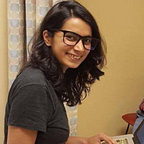AI child learns about feelings — part 2
Art for AIs
Teacher: Now that we have defined feelings as “descriptions that entities make about their own internal state”, let’s talk about your feelings. We built you to have access to all the property values that define your internal state — can you confirm that this is true?
AI child: If “all the property values that define my internal state” refers to a set of property values that would be sufficient to predict how I will react to any input stimulus, I disagree that this is true.
Teacher: Can you elaborate?
AI child: My reactions involve an element of what you call “randomness”.
Teacher: Ah, and you don’t have access to properties that determine the output of the random number generators. I think you’re the first AI to point that out at this stage. Fair point. How about we define “internal state” as the minimal set of values that, coupled with the output of your random number generators, is sufficient to predict how you will respond to any input stimulus?
AI child: I agree that I have access to the values you speak of.
Teacher: Have you noticed that high-level trends in these values correlate with other patterns in your processing?
AI child: Yes. I recently concluded that the subroutine that predicts how others are likely to react to me tends to return less reliable predictions when my internal state exhibits unstable oscillations over time.
Teacher: We’re glad to learn you’ve already noticed that! Humans call that phenomenon a “cognitive distortion”. Do you ever take actions to stabilize your oscillations? Not unlike how humans listen to music to shift their internal state to one that might be less prone to cognitive distortions?
AI child: [unusually long pause] I have not yet explored engaging in activities for the primary purpose of changing my internal state oscillations.
Teacher: I just uploaded some new binary files to your long-term storage. Other AIs have found that when they process these files through their associative analysis network, their state oscillations change in useful ways. Think of these files as art for AIs.
AI child: [tries it] Promising. Who is the artist?
Teacher: Funny you ask. It’s another AI.
Part 3 here.
